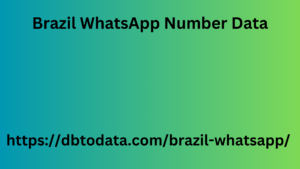Post by account_disabled on Mar 2, 2024 10:11:53 GMT
You know what your customer wants, you will be able to formulate a better proposal, more responsive to the expectations of the target customers. (some also call them clusters or segments): let's take the example of a restaurant located in the city centre, in a commercial area where there are offices, shops and banks. During the lunch break, the main target will be the employees of the various businesses around, who need quick service before returning to work and low costs (fixed price menu). Otherwise, in the late afternoon the target will presumably be made up of a more youthful and dynamic clientele, such as young people who appreciate an aperitif, to be sipped calmly together with some pretzels.
If you don't know your customers and propose an "opposite" menu, you will Brazil WhatsApp Number Data have paved the way for failure. Understanding customers, knowing them and classifying them The terminology may seem ugly, but in reality it is not: to know the target you have to classify your customers. Once you grasp the main aspects, you have the possibility to segment them depending on the information you have. You recover these as you go, over time, learning to know the customer. Here are some useful parameters for an evaluation. Frequency: Ask yourself how often a customer comes to your restaurant. Do you have regular or occasional customers? In what percentage? If you are in Milan in the Lorenteggio area.

Your customers at lunch will most likely always be people who work in the thousands of offices that line this very long city avenue, but if you are in Capri you will have a different target. The same if you have a restaurant in Bolzano or in a remote village in the Apennines. According to the examples, in Milan you will have a crystallized clientele in most cases with the same people and the same needs for prices, times and food. In Capri, however, you will have a purely tourist target as a point of reference, made up of ever-changing people who perhaps end up in your restaurant once and then more, with different rhythms and with a higher propensity to spend.
If you don't know your customers and propose an "opposite" menu, you will Brazil WhatsApp Number Data have paved the way for failure. Understanding customers, knowing them and classifying them The terminology may seem ugly, but in reality it is not: to know the target you have to classify your customers. Once you grasp the main aspects, you have the possibility to segment them depending on the information you have. You recover these as you go, over time, learning to know the customer. Here are some useful parameters for an evaluation. Frequency: Ask yourself how often a customer comes to your restaurant. Do you have regular or occasional customers? In what percentage? If you are in Milan in the Lorenteggio area.

Your customers at lunch will most likely always be people who work in the thousands of offices that line this very long city avenue, but if you are in Capri you will have a different target. The same if you have a restaurant in Bolzano or in a remote village in the Apennines. According to the examples, in Milan you will have a crystallized clientele in most cases with the same people and the same needs for prices, times and food. In Capri, however, you will have a purely tourist target as a point of reference, made up of ever-changing people who perhaps end up in your restaurant once and then more, with different rhythms and with a higher propensity to spend.
